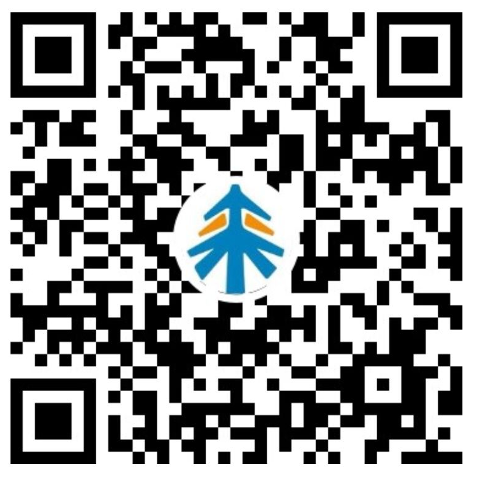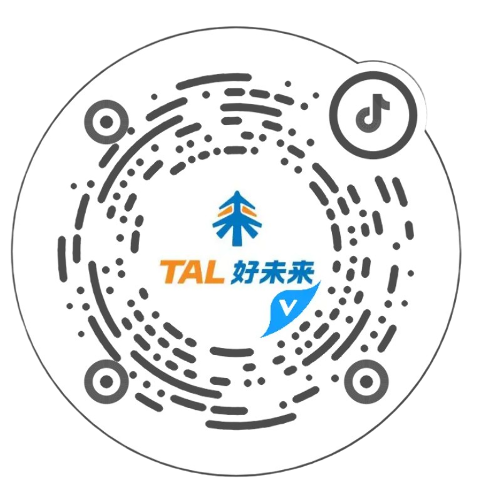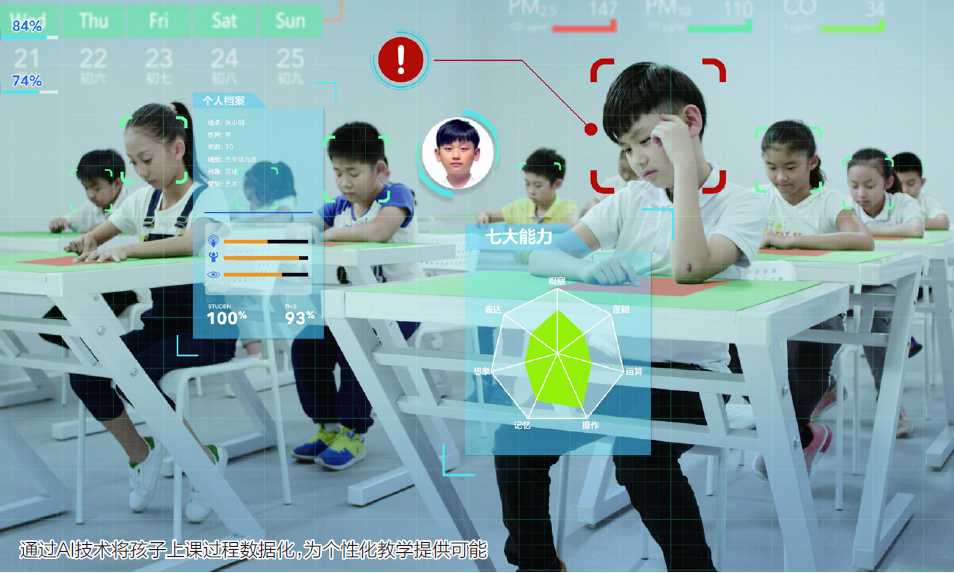




Guests
Zhang Bangxin (Founder and CEO of Gaosi Education Group)
Bai Yunfeng (Co-founder and President of Gaosi Education Group)
Yu Li (Vice President of Gaosi Education Group, President of Smart Education Business Unit, Secretary of the Group Party Committee)
Huang Yan (CTO of Gaosi Education Group, President of the Education Open Platform Business Unit)
Wang Yongxia (Reporter from Ban Yue Tan)
Li Jianfa (Reporter from Ban Yue Tan)

An information revolution is quietly taking place in the field of education. "Developing 'Internet + Education' to promote the sharing of high-quality resources" has been written into the 2019 government work report.
Modern information technologies such as artificial intelligence, big data, are playing an important role in optimizing learning methods, improving teaching efficiency, and promoting educational equity. However, education modernization is not simply about technological "addition", but about truly achieving educational innovation.
Let "teaching" and "raising" work scientifically
Ban Yue Tan: With the continuous emergence of new technologies and devices such as the internet and artificial intelligence, the methods of learning and the connotations and extensions of education have undergone significant changes. Recently, the General Office of the CPC Central Committee and the General Office of the State Council issued the "Implementation Plan to Accelerate the Modernization of Education (2018-2022)", proposing to promote the high-level and high-quality comprehensive education at all levels, and to accelerate educational reform in the information era. So, how can we find the direction of "Internet + Education" when online education platforms and institutions are booming?
Zhang Bangxin: The superiority of "Internet + education" is beyond doubt. The report of the 19th National Congress of the CPC proposes to strive to ensure that every child can enjoy fair and quality education. Two key words were extracted: one is fairness, and the other is quality. For educational technology, it is to serve these two aspects.
Personally, I believe that to a large extent, the economy determines the speed of social development, while education determines the acceleration of social development; the economy often solves today's problems, while technology often solves tomorrow's problems, and education mainly solves the problems of the future. In the promotion and application of new technology, China's education has a unique advantage. Once advanced educational technology and concepts are proven effective, they are easier to implement in our country at low cost, bringing about significant progress.
Bai Yunfeng: The word "learning" has been divided labor thanks to the internet. For example, a dual-teacher model can be used, allowing one lead teacher to teach hundreds or even thousands of students in several classes, and each class can be assigned an assistant teacher for online or offline support. Previously, teaching was the responsibility of a single teacher, but today it can be divided among two or more teachers. If such a model can be widely used in China in the future, it will effectively address the problem of unequal distribution of high-quality educational resources.
Yu Li: Technology has allowed the true distinction between "teaching" and "raising". In the past, our education focused more on "teaching", mainly staying at the level of knowledge imparting, and neglecting the more important "raising". The introduction of technological means can to some extent free teachers from teaching work and invest valuable energy in the upbringing of students. Students can also get rid of some repetitive and boring learning content, acquire knowledge more joyfully, and enhance their abilities.
Huang Yan: In the future, technological means such as artificial intelligence will bring a deeper "division of labor" to the "teaching and raising" work. "Teaching" will become a "AI +" model with artificial intelligence as the main aspect and teachers as the auxiliary aspect; while "raising" will be the main work of teachers, focusing on stimulating and awakening students' potentials, adopting a "+AI" model.
From "one size fits all" to "teaching according to individual differences"
Ban Yue Tan: "The way of the sage is to teach students according to their individual differences despite the uniformity of their basic qualities." Confucius proposed the educational idea of "teaching according to individual differences" more than 2,000 years ago, which is also a highly recognized educational ideal in ancient and modern times. However, achieving ideal teaching according to individual differences in classroom teaching is not easy. In reality, facing the same class of students, teachers can only base their teaching content and progress on the average level, which is the majority of students. As for excellent and poor students, and the individual differences of this intermediate part, teachers can only try to take into account the situation as much as possible, but it is not possible to cover all aspects.
Huang Yan: Indeed, this is the case, and it's not easy to solve for schools. Some research in education and psychology has been exploring solutions, including evaluation methods, and teaching methods, but there is still a lack of systematic solutions that can be implemented. In addition, the research on the essence of education is not deep enough. These are the core areas for technological investment.
Zhang Bangxin: Personalized analysis based on student user data portraits can achieve personalized teaching according to individual differences under a large-scale teaching model. Teaching 1000 people does not mean teaching the same thing to 1000 people, after all, education is not about teaching everyone to be the same. To achieve a personalized approach for each person, we must have data. Only by using technologies such as big data and artificial intelligence for imperceptible collection can we accurately identify the situation of each child and achieve teaching according to individual differences.
For example, with the help of AI technologies such as facial recognition and voice recognition, the classroom behaviors of each student, such as raising hand or answering questions, can be recognized, which can assist the teacher in grasping the classroom dynamics at any time, adjusting the pace and method of teaching in a timely manner, and giving full attention to each child, creating a high-quality interactive classroom experience.
Yu Li: Regarding teaching according to individual differences, I will give you an interesting example. In a test, two students both scored 77 points. Through analysis, we found that despite the same score, their levels were different. One of the students got all the questions correct but didn't finish, and after comparing his test-taking trajectory, we found that he calculated each answer again, essentially solving each question twice, indicating that his test-taking method was not correct. With such a student, as long as the test-taking method is adjusted, he will immediately score over 90, and his confidence will also increase. The world revealed through technological means is unimaginable, to the extent that even the correctness of a student's stroke order in writing can be discovered.
Huang Yan: This can help us discover where a child's strengths and advantages lie. Once their strengths and advantages are discovered, the child will find the source of happiness and confidence, and will be able to do better in their areas of strength.
Bai Yunfeng: In the past, learning achievements were tested through periodic exams, but in the future, comprehensive process data can be used to comprehensively evaluate students. Through technological means, the evaluation of talent will be more objective, and a person's growth experience can be vividly displayed on paper. Universities hope to admit outstanding students, but how is "outstanding" determined? Currently, it can only be measured by the college entrance examination score. In the future, by collecting data such as learning habits, reaction speed, and thinking characteristics, it will be possible to analyze in which areas a child has more potential.
Raising the starting point of education with technology
Ban Yue Tan: In the process of promoting educational informatization, many people used hardware devices for smart education in the early years, but the effect was not significant; in recent years, some places brought the courseware from good schools and shared high-quality educational resources to children in underdeveloped areas through live classes, but the effect was not very ideal.
Zhang Bangxin: This is mainly because they did not truly implement an education concept that puts "people" first. Smart education is a systematic project. It requires not only hardware infrastructure such as information tools, but also the coordination of soft environments such as organization, system, and manpower. Only when both are closely combined can we go far and do well. Educational technology, especially, needs to focus on the key factor of teachers. Focusing on teachers is equivalent to capturing the core. Talking about smart education apart from teachers will definitely lead us astray.
Yu Li: In order to improve the teaching and research level of teachers and make educational informatization truly effective in teaching, schools must establish a series of systems as guarantees.
Ban Yue Tan: Some people say that a country's strength is achieved on the podium in a primary school classroom, showing the significance of basic education. With the implementation of poverty alleviation efforts in China, some poverty-stricken areas have become more aware of the importance of prioritizing intellectual development for poverty alleviation. New technologies have brought possibilities for intellectual development.
Huang Yan: When we conducted research in many remote areas, we found that the children's needs for education were not as we had imagined. They don't need high-end, customized educational tools; what they need is high-quality teachers. The basic problems in education have not been solved there, and even good English teachers are missing. In some schools in remote areas that we visited, we couldn't understand what the English teacher was talking about after listening for more than 10 minutes. Their pronunciation was just too poor. Corresponding educational technology products should cover these areas.
Bai Yunfeng: The key point of educational poverty alleviation is to provide good content and bring good courses through advanced technological means; it also includes training and cultivating teachers, changing their attitudes, and improving their skills. Without an improvement in the quality of teachers, even good content will be hard to implement, and the two are indispensable.
Educational poverty alleviation also needs a technological platform to connect and match resources. To be honest, China is not short of resources, love, or people willing to contribute, but what is lacking is a good platform for matching and effective channels for transportation. This has attracted attention from relevant national departments and is being rapidly constructed and improved.